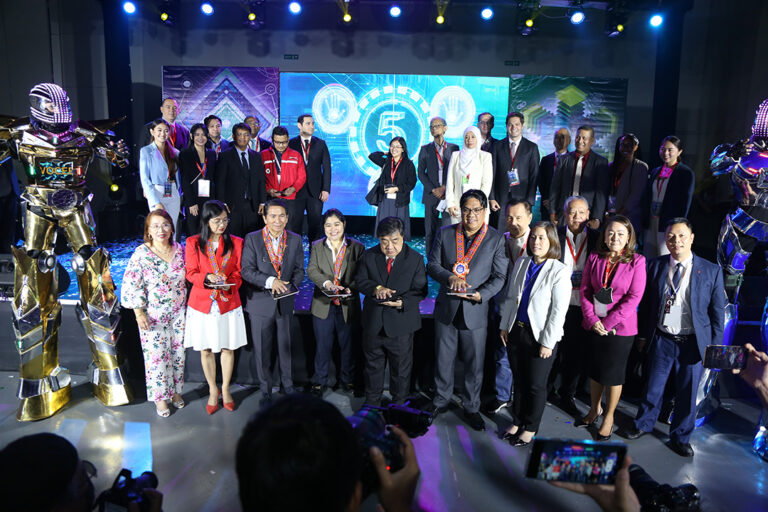By: Samuel Pimping
Alzheimer’s ravages the mind to the point of infirmity. It is one of the many diseases that
take its toll not only on the patient—but also on the people around them.
A Typical Case of Alzheimer’s
Alzheimer’s disease is the most common form of dementia, which is an umbrella term
for loss of memory and deterioration of other mental capacities. Classic signs include
drastic forgetfulness, frequent confusion, loss of direction, inappropriate behavior, mood
swings, and aggression. Globally, more than 55 million people have dementia.
Jovita Barrera, 78 years old, began to show early symptoms last year. She repetitively
asked the same questions and kept looking for an old jeepney that had long been gone.
Her family became even more alarmed when she could not even remember that she
had been hospitalized for heart failure.
Her granddaughter, Marisa, lives in the same household. She described it as an
emotionally draining experience that their family has had to endure every day.
Home Care in the Philippines
Majority of Jovita’s siblings had also been afflicted with the same disease. This is why
they managed to anticipate Alzheimer’s and became certain of it even without obtaining
a diagnosis from a medical professional. Unfortunately, due to her other underlying
illnesses and the soaring costs of healthcare and daily expenses, they had not been
able to secure insurance or fully prepare for the onset of her sickness.
Jovita’s family decided that they had no other choice but to resort to taking care of her
at home by themselves in consideration of financial, cultural, and societal factors.
Residence at a private facility imposes unsustainable monthly expenses, and
government facilities are not exactly regarded as the most reliable providers of quality
care.
It does not help that Filipinos and Asian culture tend to be highly group-oriented and
place familial union on a pedestal. Family values and a warped concept of utang na
loob (debt of gratitude) weigh heavily in our community. Because of this, Marisa worried
about what relatives and close family would say should they have chosen to place her
grandmother in a home for the aged. Situating the elderly in a geriatric facility is
commonly frowned upon in the country compared to Western societies, and this stigma
has proven to be true from Marisa’s perspective.
Taking Care of Someone with Alzheimer’s
Today, there are five of them in the household including Marisa and her grandmother.
Marisa works as a professional while her mother and cousin devote their time to taking
care of Jovita.
Since the time they had first noticed her condition in 2022, her symptoms became
progressively distressing. The situation at home rapidly took a turn for the worse. Back
then, her behavior was still controllable; she could be convinced to calm down and
acquiesce to requests. Overtime, however, she became increasingly hostile towards the
family whenever they tried to care for her—exhibiting both physical and emotional
violence. Now, she is inconsolable, and at times, Marisa’s family could not help but think
that her grandmother was no longer with them.
From the moment Marisa wakes up, she would hear her grandmother bawling in the
other room while the family attempts to comfort her. Jovita would yell profanities and
throw expletives at them as if they were intruders who were holding her against her will.
She was able-bodied and was strong enough to physically struggle, inadvertently
harming or inflicting pain upon them during the process. Due to her impaired mental
faculties and lack of emotional control, caretaking for her has been an extremely
arduous affair as she simply does whatever she pleases without any semblance of self-
restraint.
To adequately take care of her, the related expenses every month amount to roughly
₱10,000. This includes medical maintenance, adult diapers, and other necessary
expenditures. The family has actively sought out financial aid from the government,
specifically from the Department of Social Welfare and Development (DSWD).
Alzheimer’s as a Familial Affliction
What is the greatest challenge in caring for a loved one with Alzheimer’s at home?
Marisa believes that even though the financial aspect is troubling at times, it is perfectly
manageable. The most powerful hurdle, for her, is the emotional side of it all. Without a
doubt, you would do everything you can to take care of a loved one every day for the
rest of their life. But it is a much different experience knowing that they are now only a
shell of what they once were—that no matter what you do for them, they can no longer
reciprocate your love and will only treat you as even less than a stranger.
As with most families going through similar experiences at home, Marisa and her family
have felt that they could have done more in terms of preparation. What if we had her
checked sooner? Could we have prevented it from getting this worse? Regardless, it is necessary to remember that in these cases, everyone always does what they believe to
be best for their loved one at the time.
Marisa remarked that if they had the resources, she would definitely seek professional
treatment regardless of the supposed stigma. Society should realize that this is no less
noble than personally taking care of them at home because seeking residence at a
decent facility is not a matter of convenience; rather, it is a matter of welfare. The very
idea that you only accept the best care for the patient makes the pursuit of professional
intervention an act of familial love and concern, for sometimes, the patient’s needs are
better served not by the family, but by professionals.
To cope with stress, Marisa turns to gaming as a form of escape. When it comes to
home care, it is crucial for each household member to alleviate emotional burden
because everyone depends on one another, and the overexertion of one of them could
be devastating for the entire family. This is why Alzheimer’s is also known as a familial
affliction. Relative to the patient, it is just as difficult for their loved ones to manage and
live with the effects of the disease, if not more.
Anticipating Alzheimer’s
Marisa has contemplated the future at some point given that most of her grandmother’s
siblings also had Alzheimer’s. Although it is more likely for her and her mother to
acquire the same condition, it must be noted that in more than 99 of 100 cases,
Alzheimer’s is not inherited. Age, and not genetics, is the primary risk factor. The older
you are, the more probable the diagnosis.
The presence of the disease in close relatives adds to the overall risk, but it is not that
much higher if you analyze the probabilities. To be specific, a 65-year-old generally has
a 2% chance of being diagnosed with Alzheimer’s, but a 65-year-old with family history
raises the chance of diagnosis to only 2.6%—a relatively small increase. This difference
is so negligible that genetic testing specifically for Alzheimer’s is not even
recommended. Whether you possess the related genes, such a test would only tell you
have a slightly higher risk of acquiring it without much certainty.
There is no cure for dementia, so the only alternatives are support and prevention for
those with and without the syndrome, respectively. Certain lifestyle choices and
previous ailments also affect the risk of developing dementia in the long run. By
addressing these risk factors, the likelihood of acquiring Alzheimer’s can be reduced.
These include physical inactivity, alcoholism, smoking, hypertension, diabetes, social
isolation, and depression. By participating in both mentally and physically stimulating activities while avoiding vices, the risk of Alzheimer’s decreases and overall well-being
is improved.
Marisa and her family continue to take care of her lola. She plans to secure the future
for both her mother and herself someday, and as with many of us, she hopes to make
as many memories as possible that can be cherished for a lifetime.









